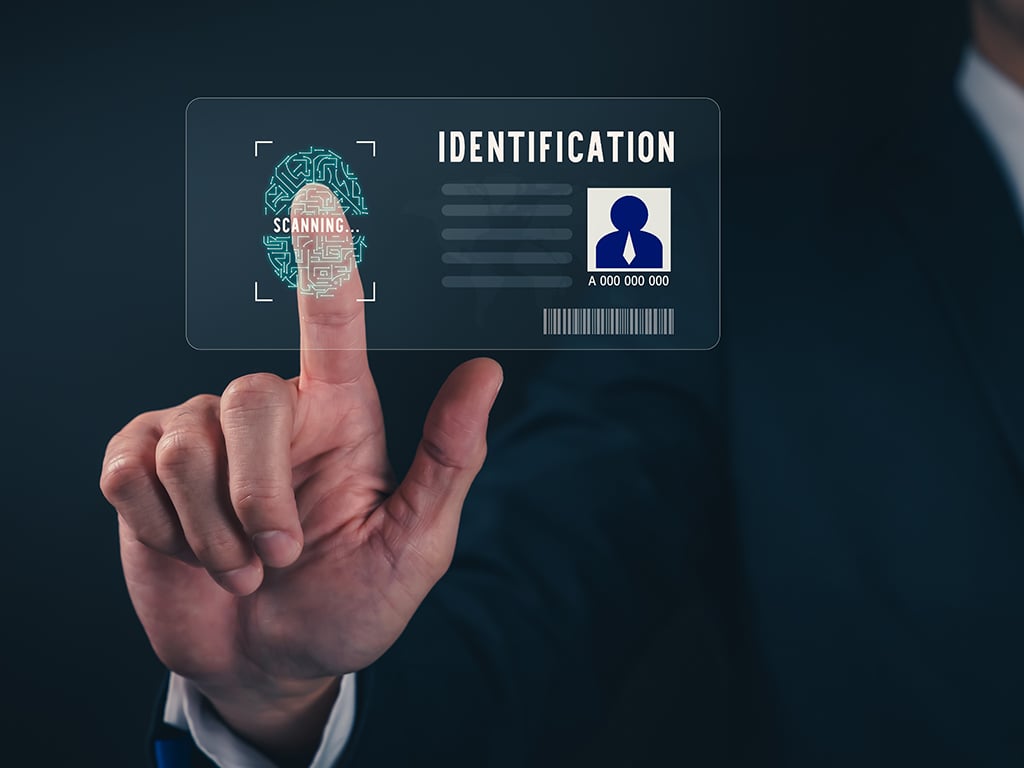When the REAL ID Act of 2005 was introduced, it promised to strengthen national security by setting higher standards for state-issued IDs, especially when it came to air travel, access to federal buildings, and more. Since then, the roll-out of the REAL ID program has faced delays, but with an impending enforcement deadline, many are questioning if REAL IDs deliver the level of security intended.
IDScan.net’s latest testing of REAL IDs revealed overconfidence in ID security could be a tragic misstep. Running proprietary, AI-powered ID verification technology on over 170 million IDs scanned, we found that REAL IDs were actually 36% more likely to be flagged as fraudulent. This means that while the process for obtaining a legitimate REAL ID is more rigorous, fraudsters are having no trouble fake identity documents claiming to be REAL ID compliant.
What is a Real ID?
Originally slated to take full effect in 2008, the REAL ID deadline has been pushed back multiple times, with the latest being May 7, 2025. In December 2020, Congress passed legislation allowing mobile driver’s licenses (mDLs) to comply with REAL ID requirements. Since then, the TSA has taken over management of the initiative.
While the original aim was to prevent another 9/11-style attack, over 20 years later, the focus has shifted to protecting against identity theft and illegal immigration. The final deadline to get your REAL ID is now May 7th, 2025, owing in part to differing opinions and adoption rates state-by-state which has dragged enforcement on for two decades.
While there aren’t any features of REAL IDs that are particularly radical in terms of identity documentation technology, they still bear the hallmarks of government-issued state IDs, such as holograms, UV images, and additional barcode security features that help verify the ID form’s legitimacy.
Delayed rollout sparks security concerns
The delayed timelines of REAL ID adoption and enforcement have created a window of opportunity for fraudsters and criminals.
According to the Department of Homeland Security, as of January 2024, just over half (56%) of all IDs in circulation in the U.S. are REAL ID-compliant. While all states, territories, and the District of Columbia are now compliant with REAL ID standards, the percentage of REAL ID-compliant IDs varies greatly from state to state. In fact, in 34 states, less than 60% of IDs are REAL ID-compliant, and in 22 states, that number drops below 40%.
To put it into perspective, there are approximately 162 million REAL IDs in circulation, while around 110 million noncompliant IDs and 14 million legacy IDs (those issued before a state’s REAL ID compliance determination) are also in circulation. The national adoption rate of REAL IDs is currently 0.56% per month, meaning by the enforcement deadline in May 2025, only around 61.2% of IDs will be REAL ID-compliant.
The delays and staggered adoption has given bad actors the chance to create templates for fraudulent REAL IDs. Businesses may incorrectly assume that an ID bearing a REAL ID star symbol are more likely to be legitimate, but as our data proves, this is not the case. REAL IDs can be faked just as easily as any other identity document, putting the onus on businesses to implement robust ID verification methods to ensure they don’t fall victim to ID fraud.
The vast differences in ID documents, which vary state-by-state and are updated regularly, make verifying without an ID verification solution impossible. According to IDScan.net research from 2024 on the state of fraudulent identities, 26% of all fake ID catches were from out-of-state IDs. Unfamiliarity with various forms introduces additional risk, particularly when attempting to verify without technology.
A staggered approach to REAL ID rollout, or at least faltering adoption, also has a more dangerous effect on businesses’ ability to prevent ID fraud: we’ve enabled fraudsters to get ahead of the game in the production of REAL ID fakes.
This throws the security ‘benefits’ of a REAL ID into serious debate, how secure is an identity form, if fraudulent copies are so prevalent?
Steps to combatting REAL ID fraud
The deadline for REAL ID enforcement is quickly approaching, whether individuals and businesses are prepared or not. There is a greater degree of risk in assuming a REAL ID is more secure than other forms. However, with the right outlook, operational set-up, and identity verification technology, businesses can still stay ahead of bad actors.
Cover all touchpoints with ID scanners
The best way to protect your business from rising identity fraud is to make sure all potential touchpoints are covered. Fraudsters are tech-savvy and deliberate, and have the know-how to identify the weakest link in your security. For physical spaces, such as stadiums, hotels, retail stores, and warehouses, ensuring ID scanners are present at all relevant locations and entrances is a must; failing to cover just one entrance is the same as failing to cover all of them.
Identity verification providers have worked hard to provide affordable verification solutions to all manner of businesses, from the world’s largest hotel and automotive chains to independently run retail stores.
While the best identity verification solutions can catch the majority of fake IDs – IDScan.net’s proprietary ID authentication solution averages 95%, and for emerging forms, such as AI-generated IDs, catch rates increase to 99.6% – there is always a chance the very best fake document may slip through. Businesses using ID verification solutions remain exponentially safer from the repercussions of ID fraud.
When looking for the right provider, consider the following features:
Document authentication efficacy
Authentication ID scanners use a series of light checks, typically UV, IR, and white light, and when paired with other identity verification software, such as VeriScan Authentication, businesses can reference these security features against each state’s template. VeriScan Authentication can also crossmatch the data embedded in the barcodes with the ID’s text-based information.
Diversified verification
Many identity verification companies only offer two or three hardware options compatible with their software, which takes a one-size-fits-all approach that doesn’t account for each organization’s unique threat landscape and operational standards.
Businesses should utilize ID scanners that are flexible and capable of processing across both computer and smartphone devices. While the objective is the same, portability can be a crucial factor in ensuring all customers are verified to be who they say they are.
Future-proof solutions
As ID fraud becomes more sophisticated and accessible, it is essential to choose an ID verification solution that is looking ahead to spot trends or security weaknesses before criminals can strike.
AI-powered identity verification is one of the only ways to combat the increasing use of AI-powered criminal tools. VeriScan uses machine learning algorithms to analyze high volumes of data and identify patterns associated with synthetic identity fraud. AI-powered systems can detect imperfections and indicators commonly seen on fraudulent identity documents to instantly flag fraudulent identity documents.
The use of third-party database checks can further strengthen identity verification processes. Integrated third-party checks, such as DMV database checks, can significantly increase the chances of catching fake IDs by verifying the data presented on the identity document against trustworthy databases.
POS integrations
Existing POS processes are crucial in making your business tick, so verification solutions need to complement existing workflows. When researching identity verification solutions, it is also important to consider existing workflows and point of sale (POS) systems. Utilizing an age verification API or SDK integrated into existing workflows means you’re not sacrificing efficiency for security.
The best providers acknowledge the need for seamless verification, and solutions such as ParseLink quickly scan, parse data, and auto-populate to the right location of your respective POS. These technologies work the same for REAL ID as they do with other forms.
While the threat of a fake REAL ID carries no larger weight than traditional fakes for the majority of businesses, we recommend a proactive approach to educating staff that REAL ID fakes are out there in droves. Businesses need to ensure their verification provider is innovating to combat new fraud types and ensure that the way they integrate catalyzes stronger protection and customer experience, not detract from it.
With the right solution provider onboard, all forms of ID fraud, including REAL ID fraud, can be mitigated.
About the Author
 Jillian Kossman currently serves as Vice President of Marketing & Policy at IDScan.net, where tenure began in March 2022. Previously, Jillian held various marketing leadership roles, including Director of Marketing at DNSFilter and iSeatz, contributing significantly to the marketing strategies of notable clients such as American Express and Visa. Experience also includes directing marketing efforts at Fourlane, Inc., and leading digital initiatives for the Travis County Democratic Party. Jillian’s marketing expertise was further honed at LookFar, managing comprehensive strategies across marketing channels, and as Account Director at Keating Magee, focusing on healthcare-related clients. Early career involvement as Marketing & Community Relations Manager at War Era Veterans Alliance underscored a commitment to community outreach. Educational background includes a Bachelor’s degree in Literature from the University of California, Santa Cruz. Additionally, Jillian is an active Committee Member on the State Regulatory Committee for the National Cannabis Industry Association since July 2023.
Jillian Kossman currently serves as Vice President of Marketing & Policy at IDScan.net, where tenure began in March 2022. Previously, Jillian held various marketing leadership roles, including Director of Marketing at DNSFilter and iSeatz, contributing significantly to the marketing strategies of notable clients such as American Express and Visa. Experience also includes directing marketing efforts at Fourlane, Inc., and leading digital initiatives for the Travis County Democratic Party. Jillian’s marketing expertise was further honed at LookFar, managing comprehensive strategies across marketing channels, and as Account Director at Keating Magee, focusing on healthcare-related clients. Early career involvement as Marketing & Community Relations Manager at War Era Veterans Alliance underscored a commitment to community outreach. Educational background includes a Bachelor’s degree in Literature from the University of California, Santa Cruz. Additionally, Jillian is an active Committee Member on the State Regulatory Committee for the National Cannabis Industry Association since July 2023.

